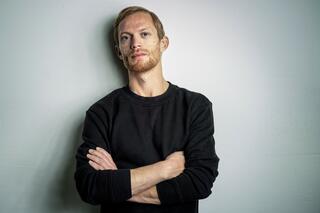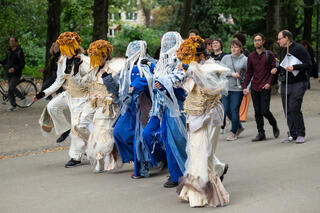Backstage with...
Anne Teresa De Keersmaeker, Radouan Mriziga and Amandine Beyer 04/2024
“Dance is not only embodied celebration and consolation but also reflection. We can ask questions without making explicit statements. Considering the complexity and the extremeness of the times, to raise questions may be all we can do.” Anne Teresa De Keersmaeker

Benze C. Werner 10/2025
“What I find interesting in the work on LP in general is the experience that we found something of other people’s stories within ourselves. In stories that were very far from us, or strange, at times. And a large, important aspect of LP is longing – triggered by the passing on of other people’s stories, but also by the sharing of personal stories.”

ZOE 10/2025
“Making art is a spiritual practice for me. I wish my audience to experience transformation, to be confronted with themselves, to feel empowered, maybe finding their own practice, without dogma, without patriarchal authority. Spirituality, to me, is a way of creating connection, with oneself, with nature, with the community.”
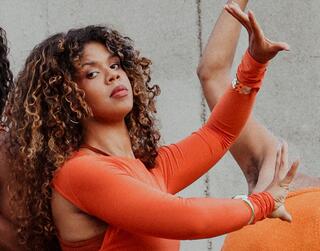
Thaddäus Maria Jungmann 04/2025
“I like humour on stage. In my work, I utilise it intuitively rather than strategically. These are overblown moments with which I make something visible, uncovering something at the same instant.”
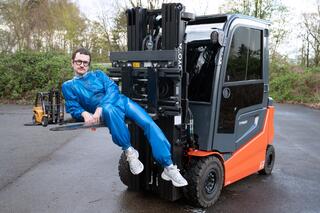
Louise Lecavalier 09/2024
“When we dream, sing, dance, or meditate, time dissolves; we enter a state of mind where limits fade and rules bend. Dancing and dreaming are my ways of stepping outside time, of reaching a very open awareness, a deeper, more creative mental state. Dance is a dance of atoms, and sometimes it’s a dance of thoughts—linear it cannot be.”

Katja Grawinkel-Claassen (FFT Düsseldorf) und Lucie Ortmann (tanzhaus nrw Düsseldorf) 10/2024
“Weil TikTok zur zeitgenössischen Lebensrealität gehört, finden mit der Plattform verbundene Phänomene, virale Trends, verstärkt Eingang in künstlerische Arbeiten wie anderes Referenzmaterial auch. Mit TikTok werden Fragen nach Nachahmung oder Imitation und Konzepte der Autor*innenschaft und des Teilens von Kreativität neu und anders relevant. Wir beobachten am tanzhaus nrw, dass Künstler*innen sich zurzeit mit kommerziellen Tänzen und Internettänzen beschäftigen.”
to the interview (at the moment German only)
Neda Ruzheva (TREVOGA) 10/2024
“We feel that the time for artists to deal with abstract concepts and universal truths is over. We believe that we have our personal experiences, and we have the myths, stories that have been passed on to us. We have our emotional luggage and our sensitivities. We really see our bodies as symptoms of the various physical and symbolic environments that they grew up in. We express our personal feelings in our works and try to connect them to the many processes that inform the moment of time we are living in.”

Charlotte Triebus 06/2024
“Regarding dance and art, I believe dealing with the present holds relevance: What moves us? What touches us? If we ask ourselves these questions today, fields that are digital will come into play, too – the internet, Youtube, immersion, and interaction – as well as technologies we employ as a matter of course. That dance should be dedicated to dealing with those fields is therefore a downright compelling task. ”

Clara Reiner, René Alejandro Huari Mateus, Omar Mohamad & Mohamad Tamem 05/2024
“To me, the potential in these dances has much to do with this form of being held by a choreography that enables people to dance without feeling creative pressure – which is swift to surface when improvisation or the invention of new steps are at stake. “ (Clara Reiner)

Saïdo Lehlouh 04/2024
“Through my work, I want to give the audiences the opportunity to experience the performance on an emotional level and to understand that it reflects the dancers' lives. That it portrays an ecosystem and mirrors our collective journey.”

Dana Yahalomi (Public Movement) 03/2024
“We define dance very broadly and think about choreography in analytical terms. Our choreographies are results of deconstruction and imitation rather than imagination; we rarely invent movements, instead we are analyse existing movements, which we recompose. These movements belong to the public. Therefore the notion of The Choreographer does not exist at Public Movement, there is no authorship regarding these movements. I think that when audiences participate in our performances, they often feel like they are the owners of the movements, and they are right. This creates a different relationship between the spectators and the choreography.”

Ayaka Nakama and Ayu Permata Sari 01/2024
“To me, art and the public sphere are always intertwined because I am a part of the public myself. The public is me, as well. I do not see myself as occupying a special position from without the public. “ Ayu Permata Sari
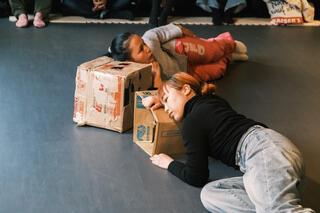
Ana Lessing Menjibar und Isabel Gatzke 01/2024
“We created this work in response to the recurrent rise of right-wing movements in Spain, Germany, and elsewhere. We created this work because this political reality confronted us not only with society today, but also with our past. And I had many questions about my family’s experiences during and after the fascist system in Spain and Germany.”
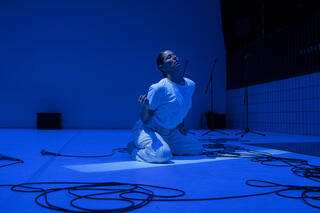
Brig Huezo 01/2024
“In my artistic endeavours, I consider the body as a form of monstrosity, a concept intricately woven with the integration of my persona into the virtual space. Within these digital realms, the conventional need for body segregation diminishes, allowing for a more fluid and interconnected experience.“
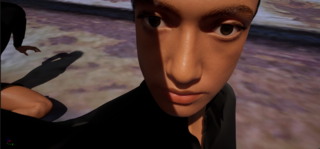
senzenberger|rieck 11/2023
“Routine is connected to effort, to achievement. This taps into the notion that we produce an achievement on stage that is consumed by audiences. The term has a general proximity to commercial dance. Contemporary dance fancies itself as being divorced from the capitalist system.”

Tiran Willemse 11/2023
“I am very much interested in the theatre because I consider it my craft. The theatre is a place built for bodies and it offers the potential for bodies to be seen differently.”
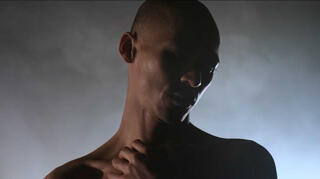
Anne Teresa De Keersmaeker, Meskerem Mees and Jean-Marie Aerts 10/2023
„[...]the relationship between dance and music is very intimate, they are two different ways of dealing with very similar impulses. The difference is that dancing makes one focus entirely on one’s own body, or, in any case, takes one out of one’s head.“ Meskerem Mees

Sorour Darabi 09/2023
“I wonder what's the point in approaching nature and environmental issues with a conservative mindset? You know, nature is queer now! The bourgeois and classic image of nature doesn't exist anymore.”

Céline Bellut 05/2023
“Gentleness will always find its way.”to
to the interview (at the moment German only)
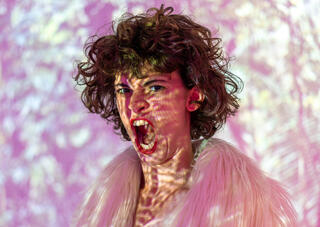
Ben J. Riepe 05/2023
“I believe that the visual has a much greater power than the spoken word, for example.”
to the interview (at the moment German only)
